
deluxe sewing machine made in japan manual
Deluxe sewing machines made in Japan, often clones of Singer Model 15, are renowned for their durability and all-metal construction․ These vintage machines, produced in various colors and branded with names like Deluxe or Precision, are highly sought after by collectors and sewists․ Despite their origins as Singer clones, they offer unique touches of Japanese engineering, making them timeless treasures in the world of sewing․
1․1 Overview of Japanese-Made Sewing Machines
Japanese-made sewing machines, including Deluxe models, are celebrated for their durability and precision engineering․ Often produced as clones of the Singer Model 15, these machines feature all-metal construction, ensuring longevity and reliable performance․ Available in various colors and branded with names like “Deluxe” or “Precision,” they were widely popular in the mid-20th century․ Their timeless design and robust build make them highly collectible today․ Many of these vintage machines came with detailed manuals, which are now sought after by enthusiasts to maintain and operate them effectively․
1․2 Importance of Manuals for Vintage Sewing Machines
Manuals for vintage Deluxe sewing machines are essential for understanding operation, maintenance, and troubleshooting․ Many Japanese-made models, like the Precision Deluxe Model 820, rely on these guides for proper threading, tension adjustment, and oiling․ With original manuals often hard to find, digitized versions have become invaluable․ Communities of collectors and enthusiasts frequently share scanned copies, ensuring these vintage machines remain functional․ Manuals also provide historical context, enhancing the appreciation and value of these timeless sewing devices for both collectors and active users․

History and Background of Deluxe Sewing Machines
Deluxe sewing machines, often made in Japan, trace their roots to Singer Model 15 clones, produced in the 1950s․ Manufacturers like Bel Air and others crafted these durable, all-metal machines, branding them with names like Deluxe or Precision, reflecting their high-quality construction and timeless appeal․
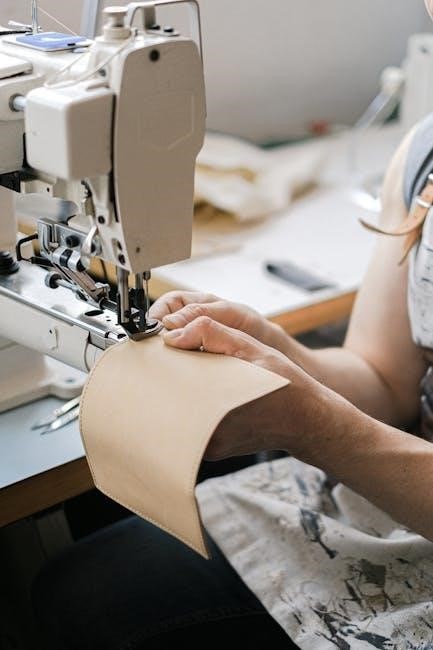
2․1 Evolution of Japanese Sewing Machine Manufacturing
Japanese sewing machine manufacturing evolved significantly in the post-WWII era, with many companies producing high-quality clones of Western models, such as the Singer Model 15․ These machines, made in Japan, were known for their durability and all-metal construction, earning a reputation for reliability․ Over time, manufacturers began developing unique designs, incorporating advanced features like zigzag stitching and automatic functions․ The industry flourished, with brands like Bel Air and Universal De Luxe becoming synonymous with precision and craftsmanship, contributing to Japan’s global reputation in sewing technology․
2․2 Singer Model 15 Clone Machines
The Singer Model 15 was widely cloned by Japanese manufacturers, resulting in durable, all-metal sewing machines․ These clones, often branded with names like “Deluxe” or “Precision,” became popular for their reliability and versatility․ Produced primarily in the 1950s, they were designed to mimic the Singer’s functionality while offering unique aesthetic variations․ Despite being clones, these machines gained a reputation for quality, making them highly sought after by collectors and sewists today for their historical value and timeless performance․
2․3 Role of Deluxe and Precision Models
Deluxe and Precision models played a significant role in the mid-20th-century sewing industry, offering high-quality, durable machines․ These Japanese-made models, known for their all-metal construction, were popular among home sewists and small tailors․ They featured versatile stitching options and reliable performance, making them indispensable for various sewing tasks․ Their precision engineering and aesthetic appeal contributed to their widespread use and enduring value, earning them a cherished place among collectors and enthusiasts of vintage sewing machines․

Key Features and Specifications
Deluxe sewing machines feature all-metal construction, ensuring durability and longevity․ They offer versatile stitching options, advanced threading mechanisms, and precise tension controls, making them ideal for various sewing tasks․
3․1 All-Metal Construction and Durability
Deluxe sewing machines made in Japan are known for their robust all-metal construction, eliminating plastic parts for enhanced durability․ Built in the 1950s, these machines, often Singer Model 15 clones, feature a sturdy build that ensures longevity and reliable performance․ The all-metal frame provides stability, reducing vibrations during use․ Their substantial weight contributes to smooth operation, making them highly sought after by collectors and sewists for their enduring quality and consistent operation, ideal for both home use and professional sewing tasks․
3․2 Color Variations and Branding
Deluxe sewing machines made in Japan were available in a variety of vibrant colors, enhancing their aesthetic appeal․ Brands often incorporated names like “Deluxe” or “Precision” into their models, such as the Dressmaker De Luxe Zig Zag S-4000․ These machines were marketed with distinct branding, often featuring decorative elements and unique color schemes․ The diverse color options and branding not only made the machines visually appealing but also helped differentiate models, contributing to their collectibility and enduring popularity among vintage sewing enthusiasts․
3․4 Threading and Tension Mechanisms
Deluxe sewing machines made in Japan feature robust threading and tension mechanisms designed for precise stitching․ These mechanisms ensure smooth fabric handling and consistent thread flow; Proper threading techniques, as outlined in manuals, are essential for maintaining optimal tension and preventing thread jams․ Regular maintenance, such as cleaning and oiling, helps keep these mechanisms functioning efficiently․ The durability of these components contributes to the machines’ longevity and reliability, making them a favorite among vintage sewing enthusiasts who value precision and ease of use․
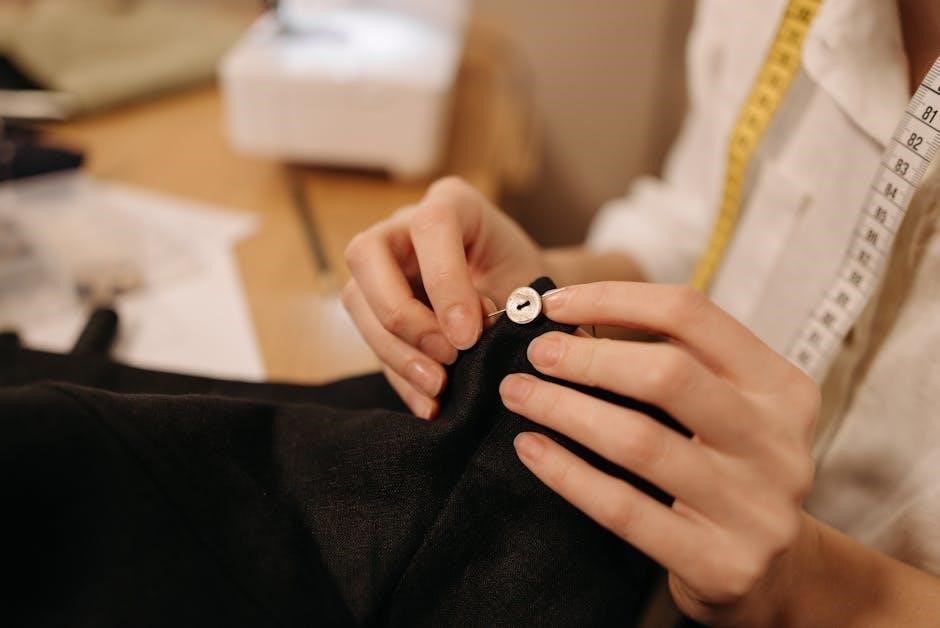
Deluxe Sewing Machine Models
Popular Deluxe models include the Precision Deluxe Model 820, Dressmaker De Luxe Zig Zag S-4000, and Universal De Luxe Zig Zag, all made in Japan with unique features․
4․1 Precision Deluxe Model 820
The Precision Deluxe Model 820 is a highly sought-after sewing machine made in Japan, known for its all-metal construction and durability․ It operates smoothly on various fabrics and features a classic design․ Users often praise its reliability and stitching quality․ However, finding the manual can be challenging, though digitally scanned copies are available online․ This model is a testament to Japanese engineering and remains popular among collectors and sewists alike for its timeless functionality and aesthetic appeal․ Its robust build ensures it remains a valuable addition to any sewing collection․
4․2 Dressmaker De Luxe Zig Zag S-4000
The Dressmaker De Luxe Zig Zag S-4000 is a versatile sewing machine made in Japan, featuring zigzag stitching capabilities․ Its robust construction and user-friendly design make it ideal for both beginners and experienced sewists․ The machine is known for its smooth operation and consistent stitch quality․ Manuals for this model are rare but can be found through online forums or vintage sewing communities․ Its popularity endures, making it a cherished find for collectors and those seeking reliable, high-quality sewing equipment with classic appeal․
4․3 Universal De Luxe Zig Zag
The Universal De Luxe Zig Zag is a high-quality, Japanese-made sewing machine known for its versatility and durability․ It features a robust all-metal construction and offers a variety of stitch options, including straight and zigzag stitching․ This model is popular among sewists for its ease of use and consistent performance․ Manuals for the Universal De Luxe Zig Zag can be found online, often as digitally scanned copies, ensuring users can maintain and operate their machines effectively․ Its timeless design and reliability make it a favorite among collectors and enthusiasts of vintage sewing machines․
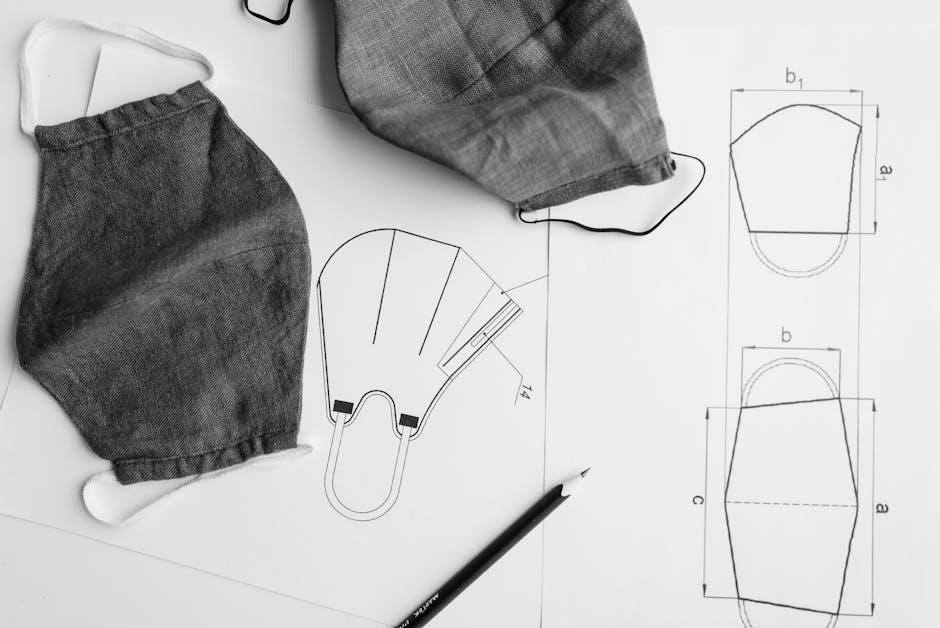
Maintenance and Care
Regular maintenance ensures optimal performance․ Proper threading, bobbin winding, and oiling are crucial․ Refer to the manual for specific lubrication tips to keep your machine running smoothly․
5․1 Threading the Machine Correctly
Proper threading is essential for smooth operation․ Always refer to the manual for specific guidance, as incorrect threading can cause tension issues or thread breakage․ Start by turning the handwheel to raise the take-up lever․ Gently pull the thread through the tension discs, ensuring it’s seated properly․ Guide the thread through the needle bar and insert it into the needle’s eye․ Avoid pulling too tightly, as this can misalign the mechanism․ Proper threading ensures even stitches and prevents common sewing problems․
5․2 Bobbin Winding Techniques
Winding the bobbin correctly is crucial for smooth stitching․ Begin by turning off the machine and ensuring the presser foot is up․ Place the bobbin on the winder, thread it through the guide, and gently wind until full․ Avoid overfilling, as this can cause thread to tangle․ After winding, trim the excess thread and insert the bobbin into the machine․ Properly wound bobbins ensure consistent tension and prevent thread jams․ Always refer to the manual for specific winding instructions tailored to your Deluxe sewing machine model․
5․3 Oiling and Lubrication Tips
Regular oiling is essential to maintain the smooth operation of your Deluxe sewing machine․ Use high-quality sewing machine oil, applying a few drops to moving parts like the gears and shafts․ Avoid over-lubrication to prevent residue buildup․ Turn the handwheel gently to distribute the oil evenly․ Some models may require periodic oiling of the bobbin area to ensure seamless stitching․ Always consult your manual for specific lubrication points and frequency recommendations to keep your machine running efficiently and prolong its lifespan․

Troubleshooting Common Issues
Common issues include thread tension problems, bobbin winding difficulties, and thread jams․ Always refer to the manual for specific guidance on diagnosing and resolving these issues effectively․
6․1 Thread Tension Problems
Thread tension issues are common in Deluxe sewing machines․ Incorrect threading or improperly adjusted tension discs can cause uneven stitches or fabric pulling․ Check the take-up lever and bobbin case for proper alignment․ Ensure the thread is guided correctly through the machine’s tension mechanisms․ If tension remains uneven, refer to the manual for specific adjustment steps or consider consulting a professional․ Regular maintenance, like cleaning and oiling, can also prevent tension-related problems․ Always test stitches on scrap fabric before sewing to ensure proper tension settings․
6․2 Bobbin Winding Issues
Bobbin winding issues can disrupt sewing progress․ Common problems include uneven winding, thread tangling, or improper bobbin alignment․ Ensure the bobbin is placed correctly on the winder and thread is guided through the machine’s tension mechanisms properly․ Overfilling the bobbin can cause winding issues, so fill it only up to the recommended level; If problems persist, refer to the manual for specific winding techniques or adjust the bobbin tension as instructed․ Proper bobbin winding is essential for smooth stitching and consistent fabric feed․
6․3 Thread Jamming Solutions
Thread jamming is a common issue that can halt sewing progress․ To resolve this, turn off the machine and carefully remove the bobbin․ Gently pull the thread to free any tangles or knots․ Use tweezers to remove debris or thread fragments from tight spaces․ Ensure the machine is rethreaded correctly, following the manual’s guidance․ Regular cleaning and proper thread tensioning can prevent future jams․ If the issue persists, consult the manual for specific troubleshooting steps tailored to your Deluxe sewing machine model․
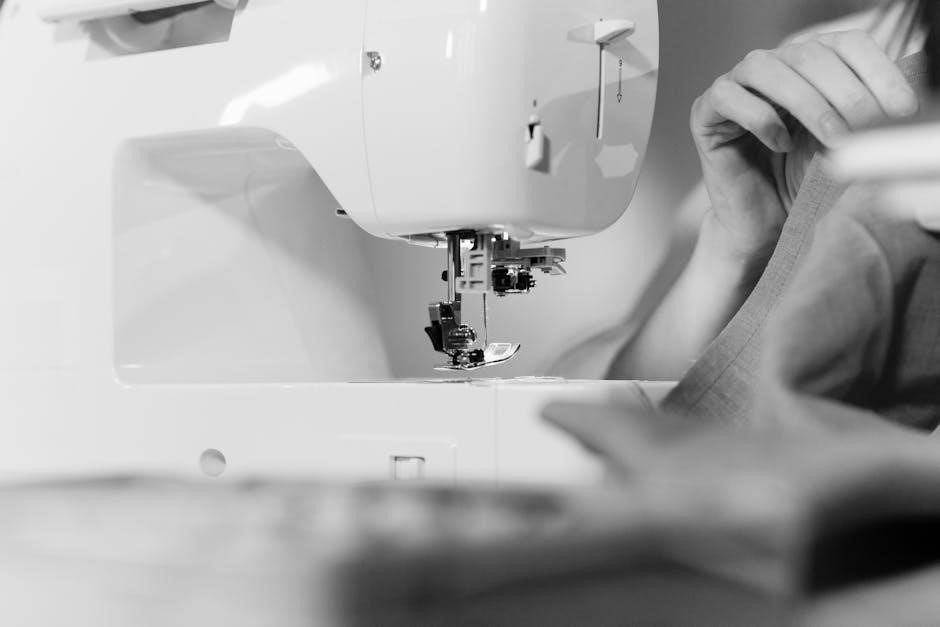
Finding and Using Manuals
Deluxe sewing machine manuals are readily available online, often as free PDF downloads․ Sources include manufacturer websites, Etsy, and vintage sewing communities, offering digitally scanned copies․
7․1 How to Download Replacement Manuals
To download replacement manuals for deluxe sewing machines made in Japan, identify the model number and visit manufacturer websites or online marketplaces like Etsy․ Many manuals are available as free PDF downloads, offering step-by-step guides for operation, threading, and maintenance․ Platforms like eBay and specialized sewing forums also provide access to digitally scanned copies․ Ensure the manual matches your machine’s make and model for accuracy․ If unavailable, expand your search to include similar models or clones, as they often share identical instructions․
7․2 Sources for Vintage Sewing Machine Manuals
Vintage sewing machine manuals can be sourced from online marketplaces like Etsy and eBay, where sellers offer digitally scanned copies․ Specialized sewing forums and Facebook groups often share manuals donated by enthusiasts․ Additionally, some manufacturers provide free PDF downloads on their official websites․ Rare and unique models, such as the Precision Deluxe 820, may have manuals available through niche vendors or collectors․ Always verify the model number to ensure compatibility and accuracy․
7․3 Digitally Scanned Copies of Manuals
Digitally scanned copies of vintage sewing machine manuals are widely available, offering convenience for users of classic models like the Precision Deluxe 820․ These scans, often in PDF format, preserve the original instructions and diagrams, making them indispensable for maintenance and operation․ Platforms like Etsy and specialized sewing communities provide access to these files, ensuring that the legacy of these machines endures․ By utilizing digital copies, enthusiasts can restore and operate their vintage sewing machines with ease and precision․

Vintage Sewing Machine Manuals
Vintage sewing machine manuals, such as the Class 15 and Super cl․64, are invaluable resources for restoring and operating classic models․ Many are now digitized, ensuring their longevity and accessibility for enthusiasts and collectors․
8․1 Class 15 Vintage Sewing Machine Manual
The Class 15 vintage sewing machine manual is a digitized, 18-page copy of the original, measuring 8․5 by 5․5 inches․ It provides detailed instructions for operating and maintaining Model 15 clone machines, which were widely produced in Japan during the 1950s․ This manual covers essential functions like threading, bobbin winding, and tension adjustment․ Shared by enthusiasts, it preserves the legacy of these durable, all-metal sewing machines, offering a valuable resource for collectors and restorers seeking to revive their vintage equipment․
8․2 Super cl․64 Sewing Machine Instruction Manual
The Super cl․64 sewing machine manual is a comprehensive guide for operating and maintaining this Japanese-made model․ It includes detailed instructions on threading, tension adjustment, and troubleshooting common issues․ The manual emphasizes the machine’s all-metal construction and durability, highlighting its reliability for various fabrics․ Available as a scanned copy, it serves as an invaluable resource for users seeking to optimize their sewing experience and preserve the machine’s functionality over time․
8․3 Plana Super cl․64 Sewing Machine Manual
The Plana Super cl․64 sewing machine manual is a valuable resource for owners of this Japanese-made model․ It provides detailed instructions on operation, maintenance, and troubleshooting․ The manual covers essential functions such as threading, tension adjustment, and bobbin winding․ Its clear illustrations and step-by-step guides make it easier for users to understand and utilize the machine effectively․ This manual is particularly useful for vintage sewing enthusiasts aiming to restore or optimize their Plana Super cl․64 machine․
Digitally scanned copies of the Plana Super cl․64 manual are widely available online, ensuring accessibility for modern users․ These copies retain the original content, including tips for maintaining the machine’s all-metal construction․ The manual has become a sought-after item among collectors, as it preserves the legacy of Japanese sewing machine manufacturing․ Its availability has been facilitated by contributions from sewing communities, making it a testament to the enduring popularity of these vintage machines․
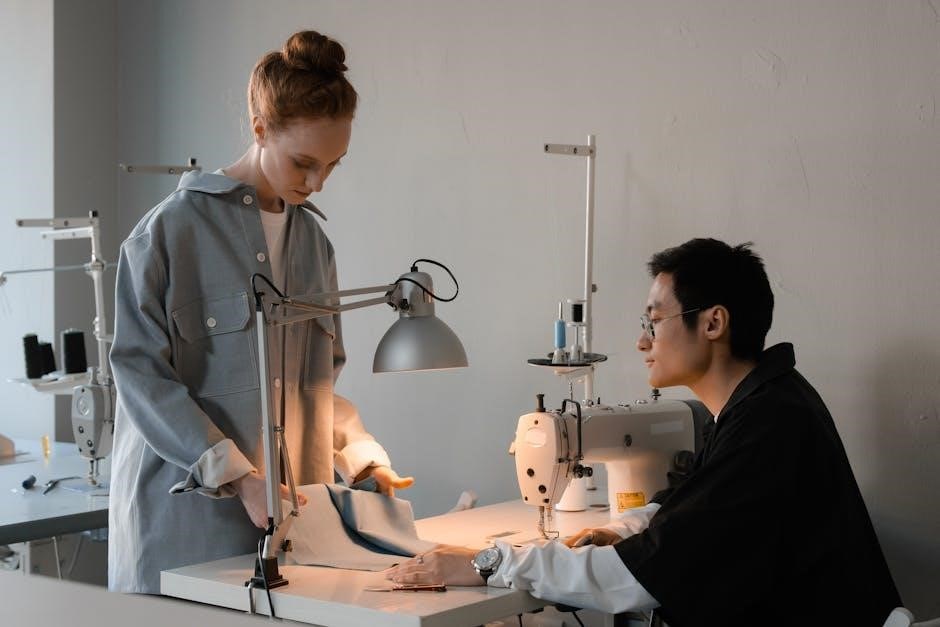
Deluxe Sewing Machine Collectibility
Deluxe sewing machines, especially rare models like the Precision Deluxe Model 820, are highly collectible due to their unique features and historical significance․ Collectors value their durability and craftsmanship, often seeking rare or restored units to add to their collections․ These machines, with their all-metal construction and vintage aesthetics, hold a special place in sewing history, making them cherished items for enthusiasts and historians alike․ Restoration tips and model-specific guides further enhance their collectibility and appeal․
9․1 Vintage Models and Their Value
Vintage Deluxe sewing machines, such as the Precision Deluxe Model 820 and Dressmaker De Luxe Zig Zag S-4000, hold significant value due to their rarity and historical charm․ Their all-metal construction and timeless design make them highly sought after by collectors․ Models in excellent condition, with original manuals or accessories, command higher prices․ Restored machines or those with unique branding are particularly prized․ The nostalgic appeal of these Japanese-made models, coupled with their durability, ensures they remain treasured possessions for sewing enthusiasts and collectors alike․
9․2 Rare and Unique Deluxe Models
Rare Deluxe sewing machines, such as the Precision Deluxe Model 820 and Dressmaker De Luxe Zig Zag S-4000, are highly sought after by collectors․ These models, often produced in limited quantities, feature unique branding or vibrant color schemes that set them apart․ Some rare versions include special attachments or exclusive designs, making them highly valuable․ Their historical significance and craftsmanship, combined with their scarcity, make these Deluxe models true treasures for enthusiasts and collectors of vintage sewing machines․
9․3 Restoration Tips for Vintage Machines
Restoring vintage Deluxe sewing machines requires careful attention to detail․ Start with a thorough cleaning and inspection of all mechanical parts․ Lubricate moving components and replace worn or damaged pieces․ For complex repairs, consult a professional or original manuals․ Sourcing authentic replacement parts is crucial for maintaining functionality and value․ Cosmetic restoration may involve repainting or refinishing, but preserve original features to retain historical charm․ Patience and precision are key to bringing these classic machines back to their former glory․